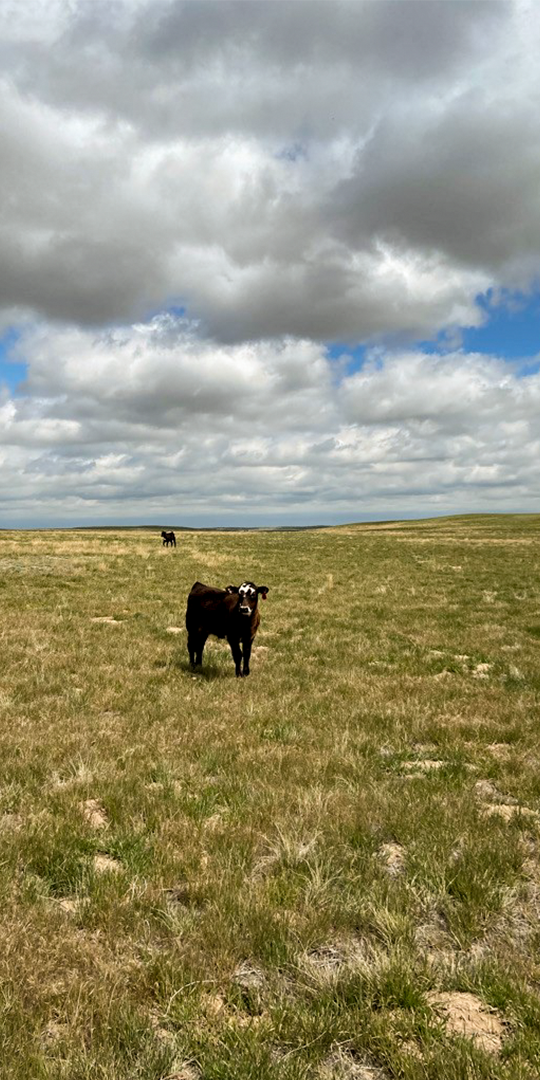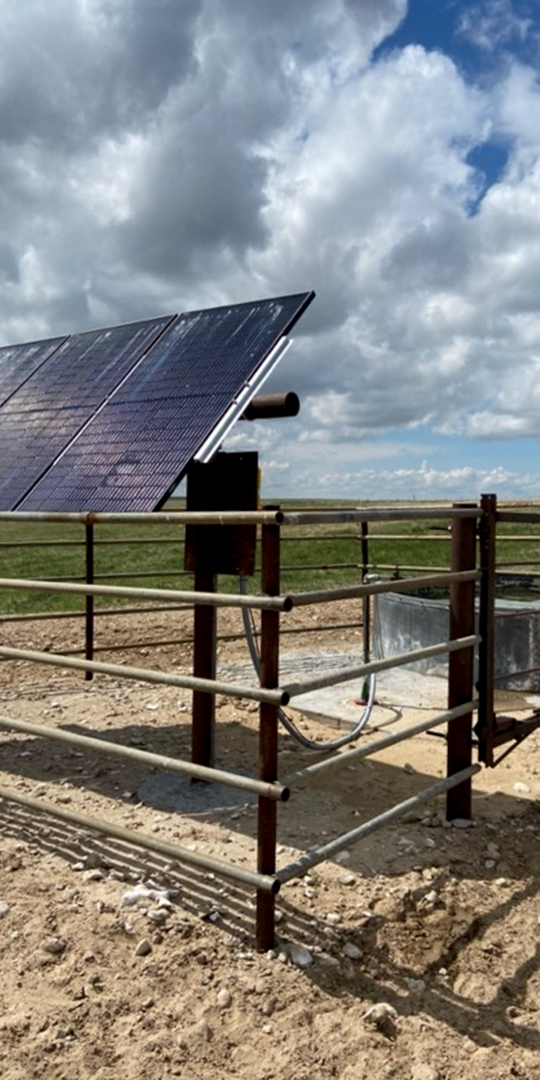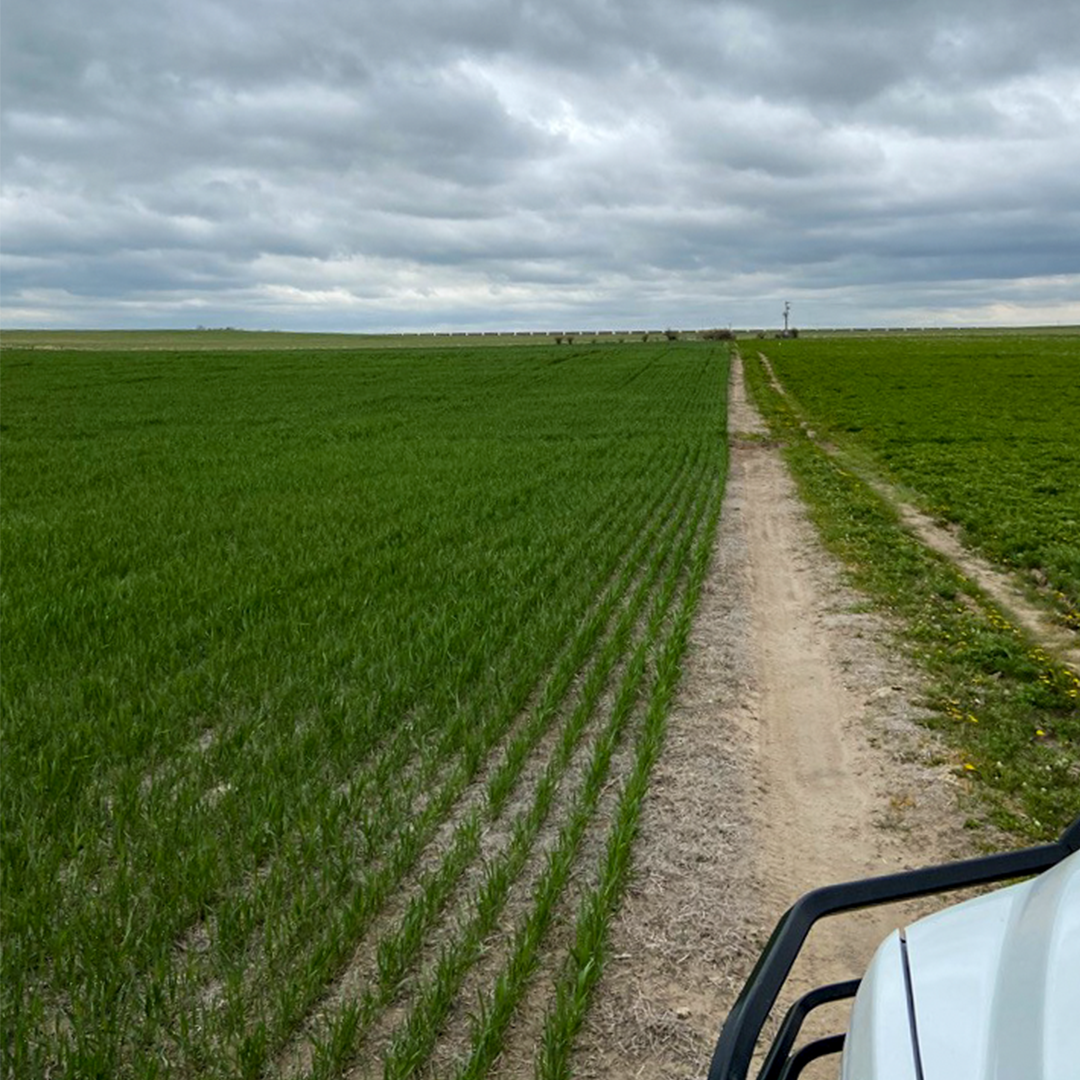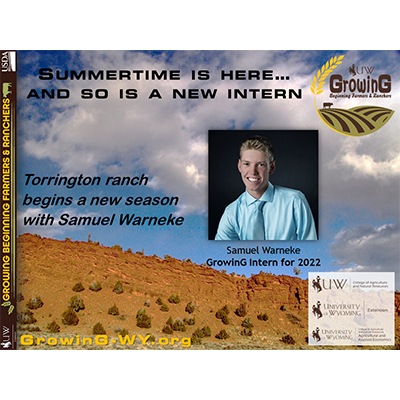Managing pasture, windmills and solar pumping plants

A calf grazing
#bfrdpwy #aginternship #RightRisk
This week I continued to learn about grazing and the native grasses in the pastures. This is important to understand because it helps ranchers look out for their land as well as make sure the cattle are getting a good diet. I learned more about how the ranchers keep cattle together and why they can only put out 30 head on a section of pasture.
Each mama cow has a calf that’s a couple months old, and they are kept together in a pasture, with one bull to fertilize the mamas’ again for new calves for next year. I also learned more about the windmill wells and the solar pump wells. They both bring water up from over 100’ down in the ground but solar pumps can produce water a lot faster on good sunny days; when the sun isn’t shinning then they don’t work so well.
We were working on a barn door this last week that had the top roller track ripped out from a snowstorm in a previous month. We just had to bolt the track back into the barn which required us to drill new holes and replace the bolts. We got that completed, but I wondered why we didn’t replace the 2’6”s that held up the track to the barn. I wasn’t sure if those will hold up in the next storm or if they will they get cracked and rip out again. I think it will be fine since we added a longer bolt and drilled new holes, but I would’ve probably done it differently.

One of the solar powered water pumps
[I wonder] How fast it takes for the pastures to recover once it has been grazed on. What is the wildfire risk, and how much gets burned during July when it gets dry and is wildfire season? What causes the fence to break and when will I get to experience how to repair a broken fence? How the irrigated crop grows once the temperatures get warmer more consistently. What equipment is required to harvest and cut the crops. When to feed cattle hay or feed mixture as opposed to grazing.
[I plan to] apply knowledge of feeding cattle to my agriculture resume, and build upon diets that cattle require, why it’s important to know what they can eat and what native grasses will give them the most protein content. Understanding how stuff functions and how important it is to keep it up in good shape to allow it to function properly. Once I kind of understand how things are working and how it needs to be fixed it will save me a lot of time and money in the future when I own my own equipment and have to do repairs myself.

Field of triticale on the left and Alfalfa on the right
Submitted by: Samuel Warneke
Edited by: GrowinG Internship Team

